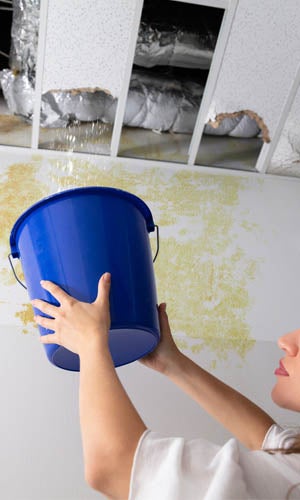6 Effective Techniques for Finding Unseen Water Line Leaks
6 Effective Techniques for Finding Unseen Water Line Leaks
Blog Article
This post in the next paragraphs pertaining to Locating water leaks is rather informative. Check it out for your own benefit and see what you think of it.

Early discovery of leaking water lines can minimize a prospective disaster. Some little water leaks might not be noticeable.
1. Take A Look At the Water Meter
Every residence has a water meter. Inspecting it is a surefire way that helps you discover leakages. For starters, shut off all the water resources. Make sure no person will flush, utilize the faucet, shower, run the washing machine or dishwasher. From there, go to the meter and watch if it will certainly transform. Considering that nobody is using it, there need to be no motions. That shows a fast-moving leak if it moves. Furthermore, if you detect no changes, wait a hr or more and also inspect back again. This means you might have a slow-moving leak that can even be below ground.
2. Inspect Water Consumption
If you identify unexpected adjustments, despite your intake being the same, it suggests that you have leaks in your plumbing system. An unexpected spike in your bill indicates a fast-moving leak.
Meanwhile, a constant increase every month, despite the same routines, reveals you have a sluggish leak that's likewise gradually escalating. Call a plumber to completely inspect your home, specifically if you really feel a cozy location on your flooring with piping below.
3. Do a Food Coloring Examination
When it comes to water usage, 30% comes from bathrooms. If the shade somehow infiltrates your dish throughout that time without flushing, there's a leakage in between the storage tank and dish.
4. Asses Outside Lines
Do not forget to examine your exterior water lines also. Needs to water leak out of the connection, you have a loose rubber gasket. One little leakage can lose lots of water as well as surge your water bill.
5. Evaluate and Evaluate the Circumstance
Homeowners must make it a practice to examine under the sink counters as well as even inside closets for any bad odor or mold and mildew growth. These 2 red flags suggest a leakage so timely focus is required. Doing regular assessments, even bi-annually, can conserve you from a significant issue.
If you know your residence is currently old, keep a careful eye on your heating units, hoses, pipelines etc. Check for stainings as well as deteriorating as most home appliances as well as pipelines have a life expectancy. They will certainly additionally normally deteriorate due to tear and also put on. Don't wait for it to rise if you think dripping water lines in your plumbing system. Call a professional plumber immediately so you do not wind up with an awful mess in your house.
Early detection of dripping water lines can minimize a potential disaster. Some little water leaks may not be noticeable. Checking it is a guaranteed means that helps you find leaks. One tiny leak can waste bunches of water and spike your water bill.
If you suspect dripping water lines in your plumbing system, don't wait for it to escalate.
WARNING SIGNS OF WATER LEAKAGE BEHIND THE WALL
PERSISTENT MUSTY ODORS
As water slowly drips from a leaky pipe inside the wall, flooring and sheetrock stay damp and develop an odor similar to wet cardboard. It generates a musty smell that can help you find hidden leaks.
MOLD IN UNUSUAL AREAS
Mold usually grows in wet areas like kitchens, baths and laundry rooms. If you spot the stuff on walls or baseboards in other rooms of the house, it’s a good indicator of undetected water leaks.
STAINS THAT GROW
When mold thrives around a leaky pipe, it sometimes takes hold on the inside surface of the affected wall. A growing stain on otherwise clean sheetrock is often your sign of a hidden plumbing problem.
PEELING OR BUBBLING WALLPAPER / PAINT
This clue is easy to miss in rooms that don’t get much use. When you see wallpaper separating along seams or paint bubbling or flaking off the wall, blame sheetrock that stays wet because of an undetected leak.
BUCKLED CEILINGS AND STAINED FLOORS
If ceilings or floors in bathrooms, kitchens or laundry areas develop structural problems, don’t rule out constant damp inside the walls. Wet sheetrock can affect adjacent framing, flooring and ceilings.
https://www.servicemasterbyzaba.com/blog/how-to-detect-water-leakage-in-walls/

As a serious person who reads about Detecting hidden plumbing leaks, I imagined sharing that piece of content was worth the trouble. Sharing is good. Helping others is fun. We recognize the value of reading our article about Leaking water lines.
Expertise available here. Report this page